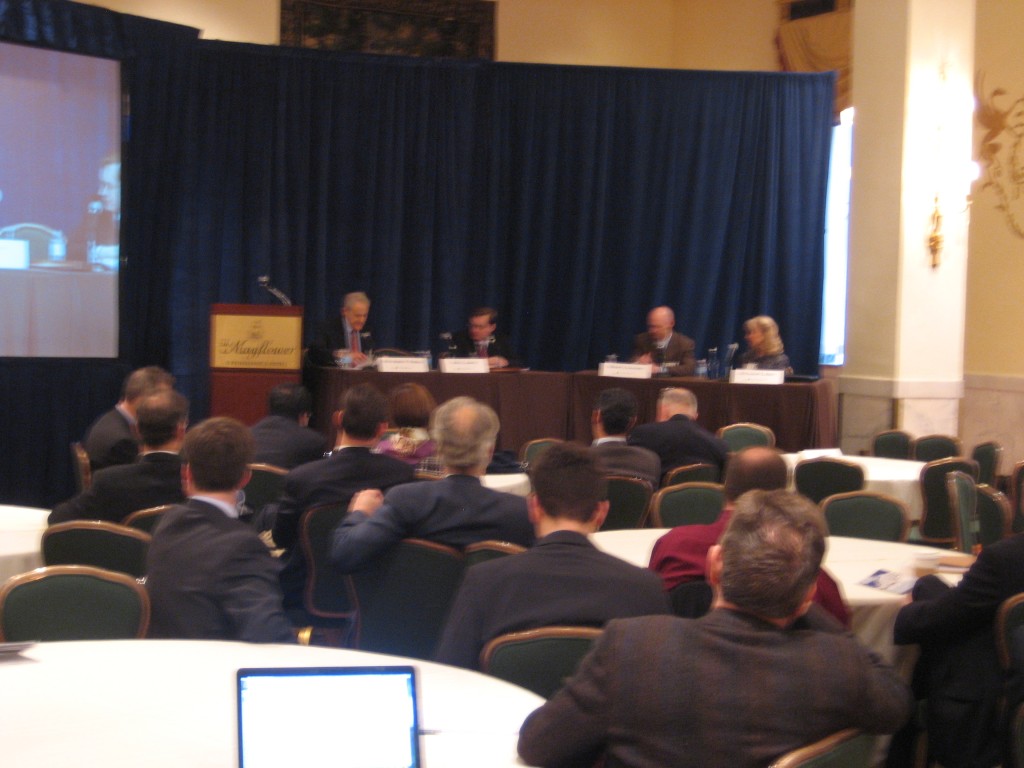Environmental Law: The Future of Cost-Benefit Analysis in Environmental Policy
Thursday, Nov. 12
2:00 p.m. – 3:30 p.m.
East and State Rooms
– Hon. Susan E. Dudley, Director, George Washington University Regulatory Studies Center
– Mr. Michael A. Livermore, Executive Director, New York University School of Law Institute for Policy Integrity
– Mr. Daryl L. Joseffer, Partner, King & Spalding
– Ms. Lisa E. Heinzerling, Senior Policy Counsel, Office of the Administrator, U.S. Environmental Protection Agency
– Moderator: Hon. Stephen F. Williams, U.S. Court of Appeals, D.C. Circuit
Note: Ms. Heinzerling is not present.
Hon. Susan E. Dudley, The George Washington University Regulatory Studies Center
CBA is here to stay. President Obama has signaled that it will stay.
The question is not whether but how will it stay?
Statutory constraints and moral and institutional restraints already contribute
CBA is a transparent framework for avoiding that the “squeakiest wheel” wins (ie. lobbyists)
Obama Admin
1 The role of distributional effects has been a part of regulatory impact guidelines and will continue
Not just this generation against next, but the core of what’s best for this generation
2 Not going straight to central control, but nudging people toward making choices
3 We can frame choices to encourage people to do what’s best for them
Problem is: are people rational?
We can know what a person’s utility is if we observe their decisions
We should be cautious about allowing government analysis to decide the cost/benefit analysis for individuals in areas where individuals should be making their own analyses
More, after the jump
Ms. Lisa E. Heinzerling, US Environmental Protection Agency
Could not attend today.
Mr. Daryl L. Joseffer, King & Spalding
Cost-benefit analysis is just a matter of figuring out whether the benefits exceed the harms
For example, the higher costs of a better smoke detector
Legal landscape of CBA
-Congress tells an agency to do a CBA
-Congress tells an agency not to do a CBA (it has done that itself)
-More commonly, Congress will suggest a more flexible standard
Supreme Court decisions previously held that agencies were limited to the legislative language specifically
Riverkeep decision means that going forward agencies have freedom to do or not do one, but must provide defense if they choose not to use CBA
Mr. Michael A. Livermore, New York University School of Law Institute for Policy Integrity
There are several areas where CBA is likely to evolve
-Distributional effects of regulation, analyzing who’s winning and losing, not just looking at macro-effects
-Very difficult analytic task to look at who’s being affected, but manageable and will see growth
We will also likely see growth in behavioral economics, especially in the wake of the market meltdown
Perception of risk by individuals often differs from the attitudes of experts in fields
(Ex. Nuclear power—looking at expert counsel would suggest fewer regulations, but greenhouse gas emissions—expert counsel would suggest increased regulation)
There is a broad consensus that it’s a good idea to evaluate regulations
-In US, almost all analysis takes place before regulation, but growing support for retrospective analysis
CBA is not going anywhere, but there are lots of areas in which it will probably change in interesting ways
The Obama Admin will look to make an imprint in the process of regulatory
Pics after the jump
